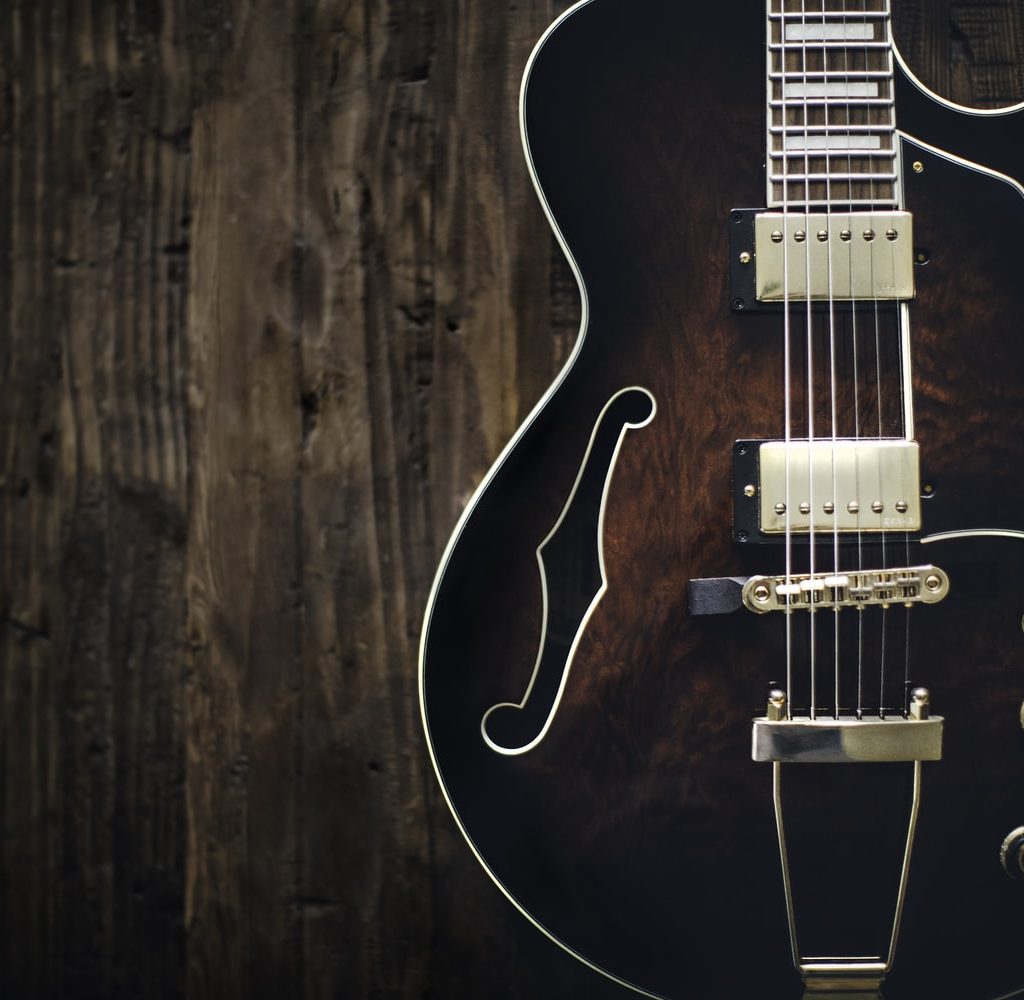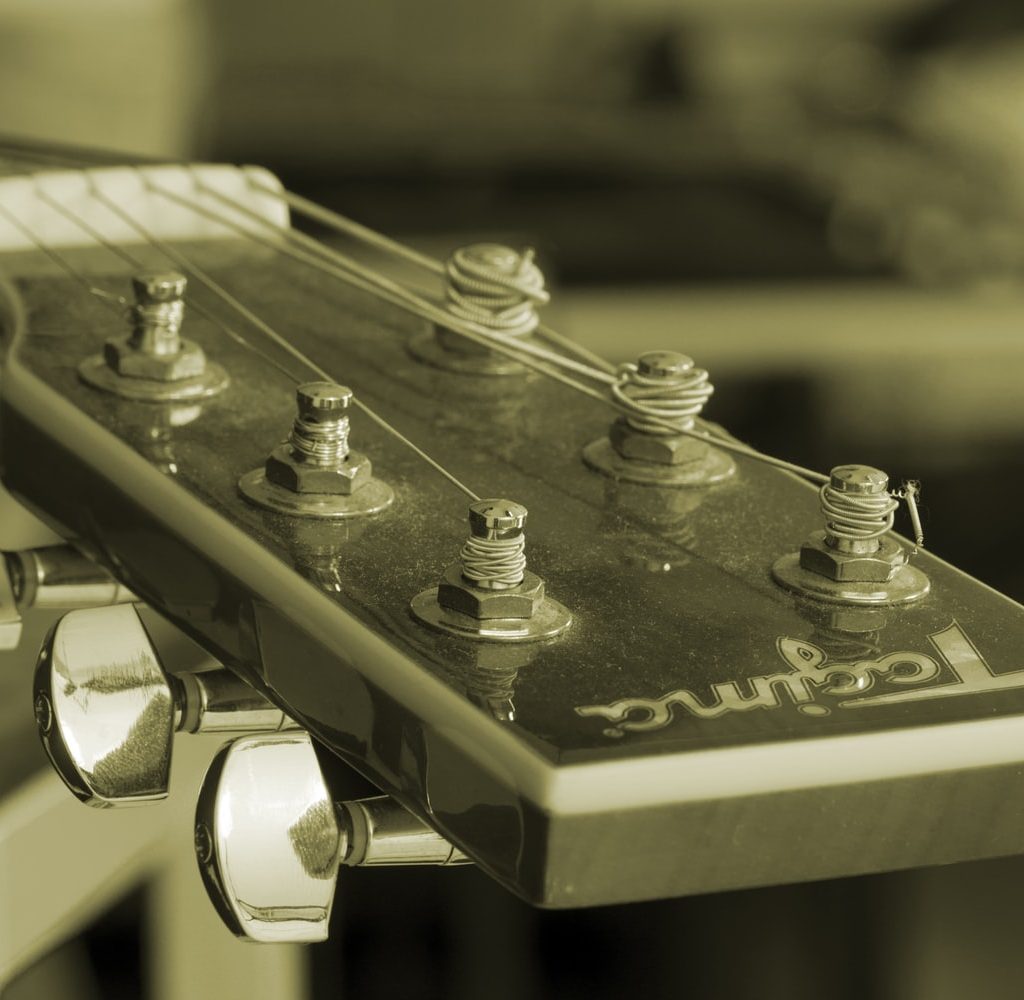It might sound like a walk in the park, but restringing a guitar is not that easy. Don’t panic, though, because, with our step by step guide, you would know how to restring a guitar, whether it’s an acoustic guitar, a bass guitar, or an electric guitar.

The great thing, though, is that you don’t have to spend any extra money on getting tools just to restring your guitar. With a flat-head screwdriver, your fingers, and some patience, you’re well on your way to doing a great job.
Let’s get right into it.
Table of Contents
Prestringing Your Guitar — How To Restring A Guitar
Find The Proper Area For The Job
Before you start restringing your guitar, there are quite a few things you need to do first. The very first of which is to find a neat and tidy area where you would restring the guitar. If the place is quiet, even better.
Restringing your guitar in a neat and tidy place would ensure that you do not lose any of your tools in the process. We’re pretty sure you don’t want to stop restringing halfway until to go in search of a tiny nut you just dropped.
Also, it’s advisable that you find a quiet place to restring the guitar. You would need this quietness when you’re tuning the guitar after you’re done restringing it. More about tuning the guitar later.
Set The Guitar Properly
Alright! This is the final step before we actually begin restringing. You’ll need to find a way to balance the neck of your guitar.
You don’t want to have to constantly fiddle with your guitar while you’re restringing it. It’s advisable that you get a cheap guitar stand. If you can’t afford that, then simply balancing it on a wall should do.

Restringing Your Guitar
Remove The Old Strings
So the first thing you want to do when restringing your guitar is to take out the old ones. To do this, you’ll need to loosen the tension on the string by turning the tuning key. You might need to try turning the tuning key either way to find which way loosens it and which way tightens it.
Once the string is completely slack, you’ll need to unwind the string from the tuning post and then remove it. Do this for all the strings.
Remove The Bridge Pins From The Bridge (Only For Acoustic Guitars)
If you have a bass or an electric guitar, then you should be able to yank the string off from the bottom of the bridge. However, if you have an acoustic guitar, you would need to remove the bridge pins first.
To do this, many people use the notch that’s built into a string-winder. However, because we are on a tight budget, our fingers would have to do. If you have long fingernails, it should be even easier.
Basically, all you need to do is find something small and strong enough to grip the bridge pins so you can pull them out. Once they are pulled out, you can easily remove the strings from inside the bridge.
Unwind Your Strings (For Electric And Bass Guitars)
If you have an electric or a bass guitar, then removing your old strings is quite a different experience. You would need to unwind the strings from the tuning pegs first. The best way is to turn the pegs in an anti-clockwise motion until every string is completely slack.
Once they are completely slack, remove the string from the tuning peg and then drag it free from the tail bridge. Be careful when dragging it so it doesn’t hurt you.

Clean The Guitar
Before you put on some fresh strings on your guitar, it is advisable that you clean the fretboard. This would keep your fretboard looking fresh and clean.
First dust the fretboard all the way to the pickups and the bridge to remove any kind of dirt that could have accumulated over time. After dusting properly, use a rag to gently wipe down on the fretboard, making sure to clean every fingerprint or other stains that might not brush off.
If you have a rosewood fretboard, then you might want to consider investing a little in fretboard oil. This is because rosewood is not finished. So, unlike many other woods, it requires a little more care.
If you can’t afford the fretboard oil, though, then any other mineral oil should do the trick. Make sure that you don’t use vegetable-based oil. They don’t work well with rosewood. So no olive oil. You can easily get mineral oil for very cheap at any pharmaceutical store.
Add The New Strings
Now that your fretboard is looking fresh, it’s time to add your new set of strings.
Pinning The Strings To The Bridge Holes
If it’s an acoustic guitar, you would notice a ball at the end of each string. You’ll need to bend that end at about a 45-degree angle. This will help them stay in place when you put them inside the bridge hole.
It is advised that you put the new strings in descending order of thickness from the thickest to the thinnest.
Once you’ve put the string into the bridge hole, you’ll need to put back those bridge pins that you removed earlier. The pin has a small hole at the front that allows it to house the string, so make sure that it lines up properly.
Once you’re sure the pin lines up, push the pin down into the bridge hole then lock the string in place. Make sure that you do not do this with too much pressure. Remember that you want them tight but not so tight because you would need to remove them again the next time you want to restring your guitar.
Repeat this process for the remaining five strings.
For Electric And Bass Guitars
Most electric and bass guitars use a Strats system that makes it much easier to string.
You’ll simply need to put the ball-end of the string behind the tailpiece, and then pull the string until it’s tightly in place.
Fixing The Strings To The Tuning Pegs
Now that all the strings have been pinned into their respective holes, you’ll need to start fixing the strings to the tuning peg. There is no specific tuning head for each string. Simply add each string to a tuning peg in such a way that it’ll be easy for you to tune as you’re playing.
Starting with the thickest string, pass the end of each string through one tuning peg (inside to outside), and then pull it till it’s really tight. Once it’s tight enough, wrap the string around the tuning peg, going under the string.
Once you’ve done that, turn the tuning peg anti-clockwise so that the string wraps around the peg slightly.
At this point, you have two options. One, if you have a string cutter, use it to cut off the excess string. However, if you don’t simply continue turning the tuning peg until all of the excess string wraps around the peg in a bun.

Poststringing Your Guitar
Whew! Finally, you’ve restringed your guitar. We’re are almost there but we’re not quite done yet. After restringing your guitar, there are a few things you must do.
Disposing Of The Old Strings
This might sound very straightforward but if we got a dollar for every time a loose string injured someone, we would keep counting for years to come.
Once you’re done restringing your guitar, you need to take the old strings and roll them up, making sure that the sharp edges are not sticking out in any way. This would ensure that when you throw them out, the sharp edges don’t stick out and injure people.
Tuning Your Guitar
This is probably the most important part of this whole process. Without any tuners, it might be quite daunting to completely tune your guitar from scratch. However, we’ve got you.
We knew it would be quite difficult to teach you how to tune your guitar via text, so we enlisted the help of someone to teach you. The video below is a beginner’s guide to tuning your guitar. No matter the guitar you have, it’s the same principle that applies, we highly suggest you watch it.
Until next time, we still remain your number one Music Resource.

